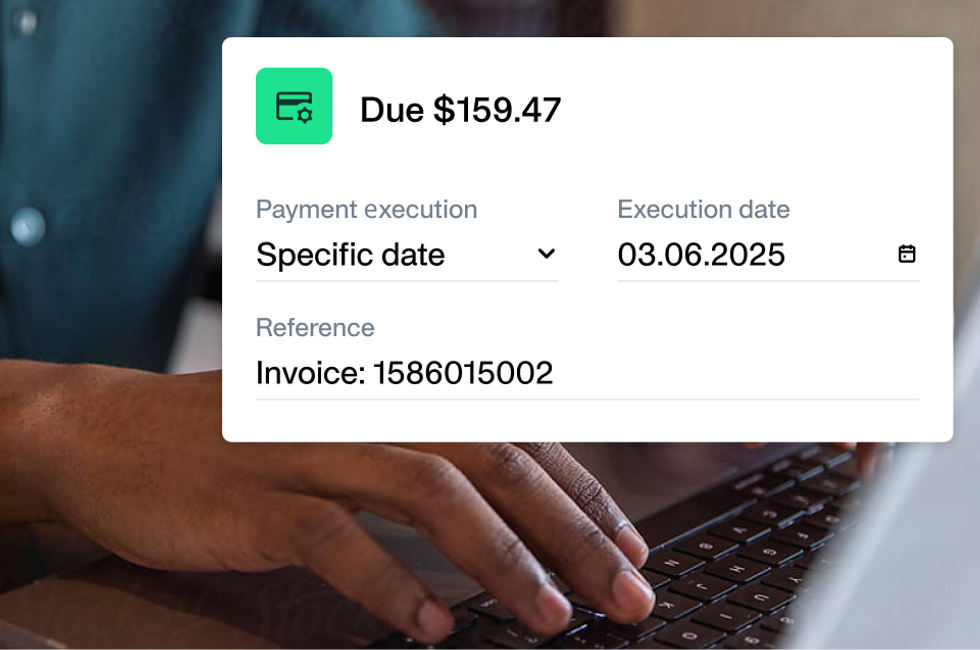
SaaS management: how to effortlessly track company subscriptions



SaaS subscriptions are very useful but can get out of control and generate financial waste in your organization. Find out how to optimize them.
By submitting this form, you agree to receive emails about our products and services per our Privacy Policy.
SaaS management is an increasingly important part of financial control. Every year, businesses of all types increase their amount of subscriptions. Here, they're effectively outsourcing discrete business functions to technology that automates some workflows and generally improves business operations.
It's not surprising then that the SaaS market has a current annual growth rate of 18%.
Modern companies regularly evaluate technology to find out ways to improve their operations. For every business need, there are plenty of SaaS solutions. Most are inexpensive and can generate value for your business. Unless, of course, you're paying for subscriptions that nobody is using. Or if you are licensing many subscriptions for the same purpose.
What is SaaS?
SaaS stands for Software as a Service. SaaS are subscription-based licenses to software that companies purchase to get access to discrete pieces of technology. Examples include email marketing, absence planning, and expense management software.
SaaS is a crucial part of digital transformation. Companies are moving towards cloud-based micro-services and relying on APIs instead of expensive monolithic software on-premises or legacy processes on spreadsheets or paperwork.
The idea is simple. A company has many problems to solve and efficiencies to generate. In the same way that specialized labor improved our economy, companies can generate more returns on their investment by outsourcing their specific problems to subscriptions that give them the tools to solve them.
Do you hire and manage dozens of freelancers for a translation company? Freelance management software can make that easy and efficient.
Do you need a plugin for your CMS? Why build one when you can license one for $4.95 a month?
Track all your recurring business payments in one place
What is SaaS management?
Companies of all sizes will engage in multiple SaaS subscriptions, hence the idea of SaaS management.
It's essentially the licensing, paying, and canceling of your SaaS subscriptions so that you only pay for what you need.
The opposite of SaaS management is not to manage at all. Let anyone in the company start subscriptions with companies without anyone else knowing. But, in this scenario, there's a chance that a few months later, someone will uncover thousands of dollars a month being spent on tools that are no longer being used.
As a finance leader, saving and optimizing subscription management for SaaS is low-hanging fruit. And getting on top of it is relatively easy.
Why do you need it to manage your company subscriptions?
The problem is also quite obvious. Every team in the company needs these tools to get their work done, which is great. But then, things happen:
- A tool or subscription that seemed useful turns out to be a lot more limited than expected. As a result, the team hardly ever uses the tool and forgets about it rather than cancelingƒ[ it
- A tool is no longer used, but nobody has realized that a new renewal period has started. You will now have to pay for this redundant subscription for the whole year
- The company is paying for two subscriptions that do essentially the same thing
- Someone in HR has licensed a tool and has seats unused, but nobody else knows about it
By managing your SaaS subscriptions, you can solve or avoid all the above problems and situations, resulting in money savings and operational efficiencies.
How can SaaS management help you save money on your subscriptions and improve organizational efficiency?
SaaS management can help you achieve this by:
- Establishing the ways and setting the conditions in which a team can sign up for a new tool
- Alerting relevant people that a subscription is due for renewal. This is especially important for yearly licenses
- Keep accurate records of current subscriptions
- Help teams decide if they still need the license
A checklist to reduce the cost of your company's subscriptions
To reduce the costs of SaaS subscriptions and to make sure the company gets the most value out of them, we have put together this checklist:
1. Write a policy for big investment licenses, including an approval process from the finance team
Firstly, write a policy determining the approval process for new (big investment) SaaS licenses.
While teams have budgets and need the freedom to use them, SaaS subscriptions are liabilities. If left unchecked, they will keep costing money to the business in forthcoming finance cycles. And the finance team has a stake in this and should oversee this process because of the liability status of SaaS subscriptions.
A great place to start is a brief policy that details the approval process and documents some of the behaviors the teams need to engage with. Of course, policies needn't be long or inaccessible. A few paragraphs in a wiki and a quick Slack message to department heads can be all that is required.
We'd recommend that this policy includes approval from the Finance controller, perhaps limited to subscriptions costing above a certain amount or only for annual subscriptions. The policy needs to be adapted to your company culture, but the broader point is that the finance team must be aware of new, essential commitments from a finance standpoint.
2. Use expense management software that highlights subscriptions
A smart expense management solution can recognize whether a payment is recurring using subscription management software.
At Payhawk, our machine learning recognizes any payment that could be a subscription (even past expenses) and highlights it to the user to mark it as one if correct. Meanwhile, the finance team (who will be your Payhawk account admins) can see all of the recurring payments in the portal to see what's coming in and out, manage cash flow, forecast appropriately, and suggest savings opportunities where possible.
3. Keep a database of all the SaaS subscriptions
If your company uses Payhawk, the finance team can see all the subscriptions using the software above. They can also see who uses the subscription when the payments occur (e.g., monthly or annually), and what it is generally for.
The finance team can then use the information to ask more in-depth questions too, like:
-What does the tool do? This is important as teams often use different tools to do the same job. There might also be an all-in-one tool that could offer savings vs. licensing many other tools to do smaller jobs
-When does the renewal period end? This is key, too, as teams must cancel subscriptions before the renewal period to avoid paying for a new cycle
4. Make sure teams are accounting for the SaaS costs
Teams need to "pay" for their own subscriptions, but sometimes they fail to account for them in their budgets.
This could be for various reasons. Maybe the tool was already licensed by someone on a team who has now left. Now, a new team has inherited its usage but never considered the costs of the license.
Conversely, if teams account for this cost as part of their budget, they are more likely to interrogate its usefulness and cancel to redeploy the budget on something they need more. Effectively, you're setting the context for others to care.
5. Put reminders on the calendars for a week before renewal periods
Every time a new subscription is taken on, the "owner" (the person who approves the licensing outside the finance team) will need to issue reminders before renewal.
Ask people to set those reminders and include you in them. This way, you can briefly discuss this before committing to another cycle. It's also useful in the event of that person leaving the business.
6. Involve your procurement team in high-value subscriptions
SaaS subscriptions can cost anything from a few dollars a year to thousands or even close to a million.
Mandating a more thorough review and comparison process for high-value subscriptions with six or seven figures of "total cost of ownership" (e.g., e-commerce platforms or enterprise CRM tools) makes sense.
By involving procurement specialists, you're guaranteed a thorough process will occur, comparing all the alternatives based on criteria important to the business or department.
Not every company has a procurement team, but the advice is broadly the same: if you're considering a new expensive subscription, the teams arguing for it will need to present a business case, compare all the alternatives, specify the selecting criteria, and then explain why the chosen tool is the right one.
How Payhawk's subscription management can benefit your business
Never miss a payment or pay for a duplicate again with Payhawk’s subscription management.
Book a demo today and see how virtual company cards and expense management software (including subscription management) can help your business achieve its digital transformation.
Trish Toovey works across the UK and US markets to craft content at Payhawk. Covering anything from ad copy to video scripting, Trish leans on a super varied background in copy and content creation for the finance, fashion, and travel industries.
Related Articles


Recurring expenses: The silent cash drain you can’t ignore

